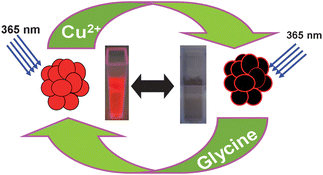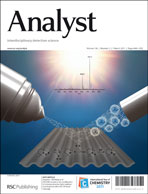Fluorescent gold clusters as nanosensors for copper ions in live cells†
Abstract
This paper reports the use of fluorescent gold nanoclusters synthesized using bovine serum albumin (Au–BSA) for the sensing of copper ions in live cells. The fluorescence of the clusters was found to be quenched by Cu2+ enabling its detection in cells. The selectivity of the nanosensor was demonstrated in the presence of several


 Please wait while we load your content...
Please wait while we load your content...